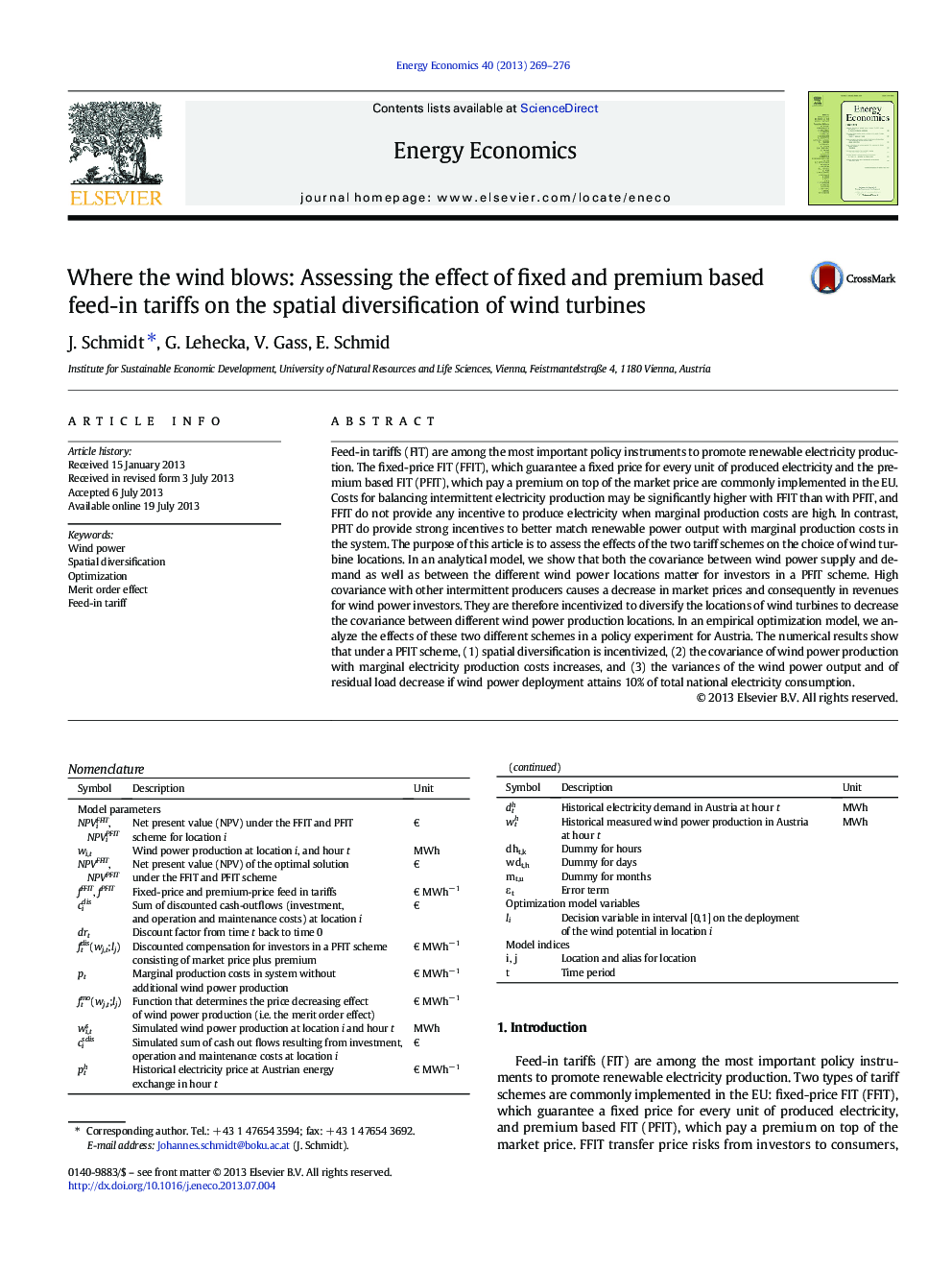| کد مقاله | کد نشریه | سال انتشار | مقاله انگلیسی | نسخه تمام متن |
|---|---|---|---|---|
| 5064763 | 1476723 | 2013 | 8 صفحه PDF | دانلود رایگان |
- We compare investment behavior under fixed and premium feed-in tariffs.
- An analytical model shows that spatial diversification is incentivized by premium schemes.
- Using an optimization model, we compare the two schemes for the case of Austria.
- Premiums incentivize spatial diversification of wind turbines.
- Consequently the variance of residual load is lower than with fixed feed-in tariffs.
Feed-in tariffs (FIT) are among the most important policy instruments to promote renewable electricity production. The fixed-price FIT (FFIT), which guarantee a fixed price for every unit of produced electricity and the premium based FIT (PFIT), which pay a premium on top of the market price are commonly implemented in the EU. Costs for balancing intermittent electricity production may be significantly higher with FFIT than with PFIT, and FFIT do not provide any incentive to produce electricity when marginal production costs are high. In contrast, PFIT do provide strong incentives to better match renewable power output with marginal production costs in the system. The purpose of this article is to assess the effects of the two tariff schemes on the choice of wind turbine locations. In an analytical model, we show that both the covariance between wind power supply and demand as well as between the different wind power locations matter for investors in a PFIT scheme. High covariance with other intermittent producers causes a decrease in market prices and consequently in revenues for wind power investors. They are therefore incentivized to diversify the locations of wind turbines to decrease the covariance between different wind power production locations. In an empirical optimization model, we analyze the effects of these two different schemes in a policy experiment for Austria. The numerical results show that under a PFIT scheme, (1) spatial diversification is incentivized, (2) the covariance of wind power production with marginal electricity production costs increases, and (3) the variances of the wind power output and of residual load decrease if wind power deployment attains 10% of total national electricity consumption.
Journal: Energy Economics - Volume 40, November 2013, Pages 269-276
